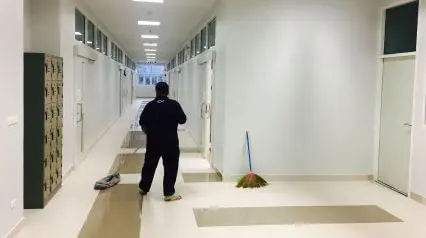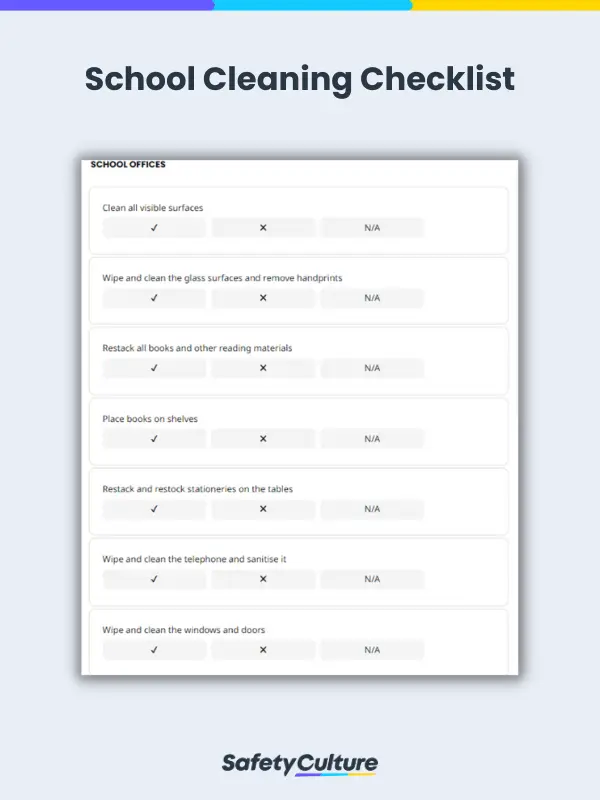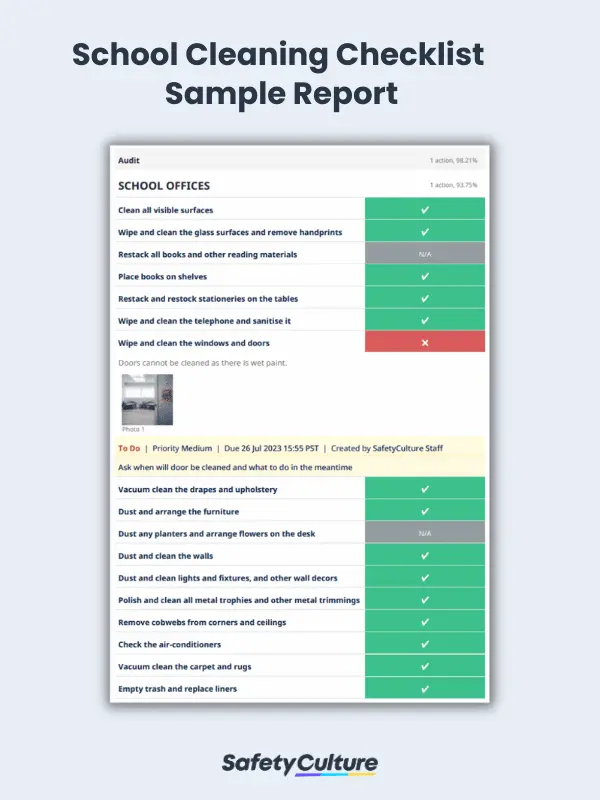What is a School Cleaning Checklist?
A school cleaning checklist is a document used by school administrators and cleaners to ensure a standardized level of cleanliness across the entire school. It details the specific tasks to be done, the materials to be used for cleaning, and the items to look out for.
Importance
For schools, cleanliness is a must. However, cleaning a school is no easy task, hence the need for a school cleaning checklist. Having a checklist for cleaning your school helps ensure all necessary tasks are completed in the right order, which also helps streamline the process of cleaning itself.
Additionally, a school cleaning checklist helps promote more hygienic practices for cleaners, as it often includes tasks such as sanitizing high-touch surfaces, disinfecting restrooms, emptying trash bins, and ensuring proper ventilation. As a result, this promotes better hygiene among students and teachers who will use the same facilities.
By adhering to these protocols, schools can reduce the spread of illnesses and create a safer space for students and staff. Following sanitary practices also promotes a better learning environment for students, as well as makes their immediate work areas clear enough for socializing and movement in case of emergencies.
Lastly, using a school cleaning checklist helps ensure compliance with the administration’s internal standards and your school’s area’s legal safety requirements. This not only safeguards the well-being of students and improves their learning environment, but it also helps the school avoid potential penalties and legal issues.
Common Cleaning Tasks for Schools
When cleaning the school premises, the following tasks are often involved:
- For classrooms and offices: Dusting surfaces, organizing paperwork, wiping down desks, sanitizing chairs, emptying trash bins, and vacuuming or mopping floors.
- For hallways and corridors: Sweeping, mopping, removing scuff marks, and cleaning windows and mirrors.
- For common areas: Cleaning and disinfecting cafeteria tables, restocking supplies, and maintaining a clutter-free environment.
- For restrooms: Sanitizing toilets and sinks, refilling soap dispensers and paper towel holders, wiping down mirrors and counters, mopping floors, and cleaning trash bins.
- For sports facilities: Sweeping and mopping floors, cleaning and disinfecting exercise equipment, cleaning changing rooms, and putting away equipment once done with.
- For outdoor areas: Maintaining clean playground equipment, sweeping walkways, and removing debris.
- For specialized working areas such as laboratories and libraries: Disinfecting surfaces, handling chemical spills, dusting shelves, organizing books, and maintaining a quiet and clean study area.
What to Include in a School Cleaning Checklist
A school cleaning checklist often has its items and tasks sectioned into the places to be cleaned, following a specific order set by administrators. Typically, it is done in this order:
- Offices
- Hallways
- Classrooms
- Bathrooms
- Gyms
Some of the tasks in a school cleaning checklist include the following:
- Date of cleaning
- Cleaning for offices:
- Clean visible surfaces
- Restack books
- Sanitize desks, telephones, books, and stationery
- Vacuum and clean any upholstery
- Polish any trophy
- Dust walls and floors
- Empty trash bins
- Cleaning for hallways:
- Remove cobwebs
- Clean walls and floors
- Wipe light fixtures
- Dust off bulletin boards
- Cleaning for classrooms:
- Dust and clean the desks, chairs, and all visible surfaces
- Wipe and clean floors, blackboards, cabinets, windows, whiteboards, and walls
- Store away all strewn books and stationeries
- Rearrange any shelves or desks, if applicable
- Clean the light and check for any fused bulbs
- Empty trash bins
- Cleaning for bathrooms:
- Wipe and clean faucets, trash bins, counters, sinks, and toilets
- Disinfect surfaces
- Refill soap dispensers and tissue holders
- Clean floors
- Cleaning for gyms:
- Wipe and air any gym mats and equipment
- Clean light fixtures, floors, and walls
- Disinfect equipment and shared areas
At the end of the school cleaning checklist, you should have space for recommendations and other observations. This will be for other findings deemed important to note by your facility managers, janitorial staff, and other cleaners, as sometimes, while cleaning, they can discover different areas of concern. There should also be an area for inspectors to sign off to ensure the validity of the checklist and that all essential areas of the school have been cleaned properly.
Here is a digital school cleaning checklist example for reference:
FAQs about School Cleaning Checklists
You should use your school cleaning checklist daily, as schools should be cleaned at the end of each day. Aside from these daily cleaning tasks, deep cleaning can be done as needed or during holidays or days off.
The person who will head school cleaning activities and use the school cleaning checklist will differ per school. Ideally, however, there will be a head custodian or facility manager to oversee different cleaning staffs and teams that will work together to clean the school.
Yes, the school cleaning checklist can be customized to suit the specific requirements of a school. Different schools may have different needs, layouts, and priorities. It’s important to review and update the checklist periodically to ensure it remains relevant and effective.




